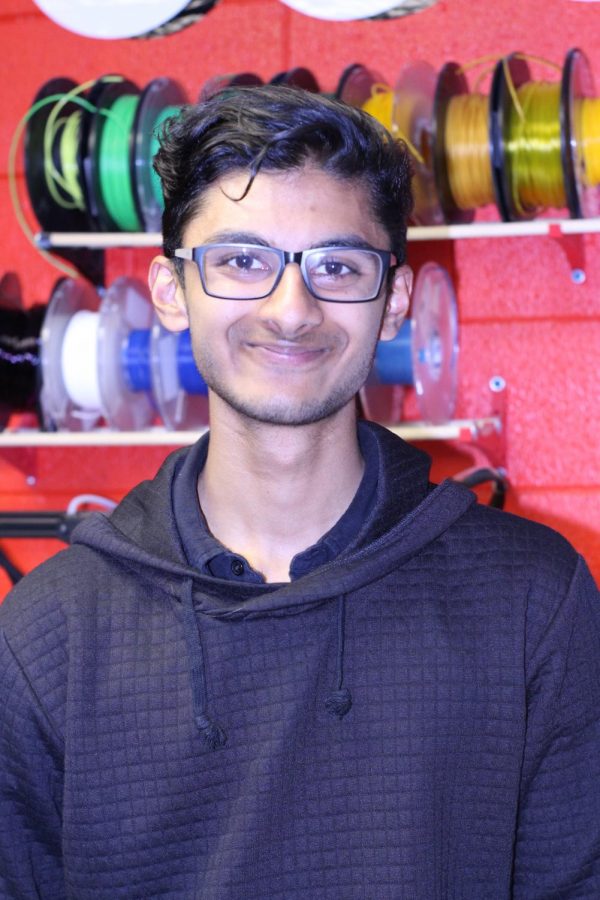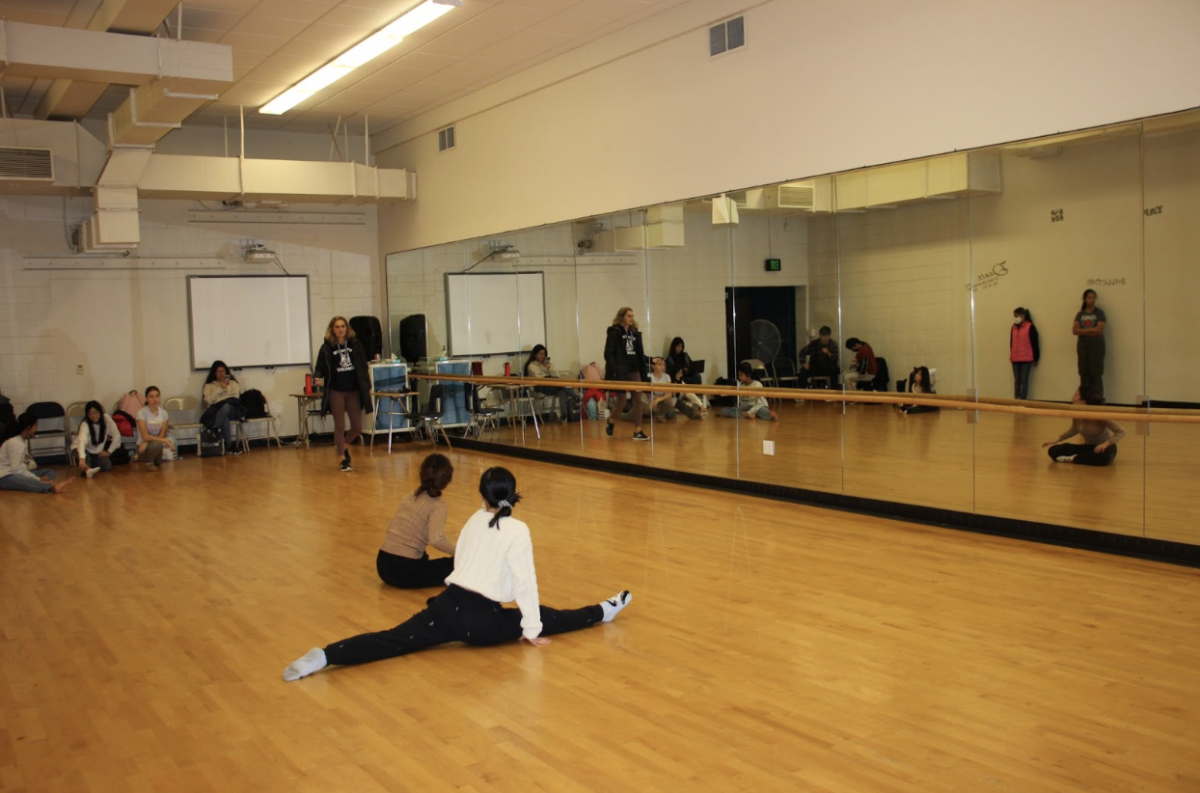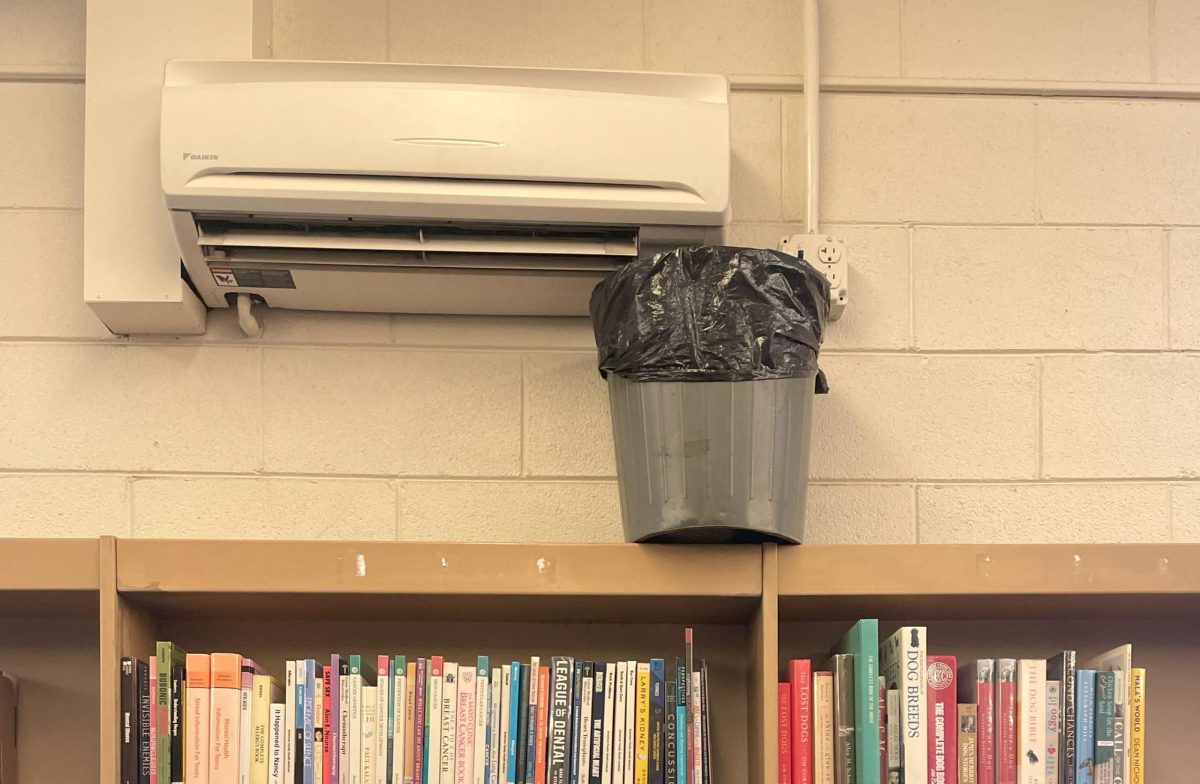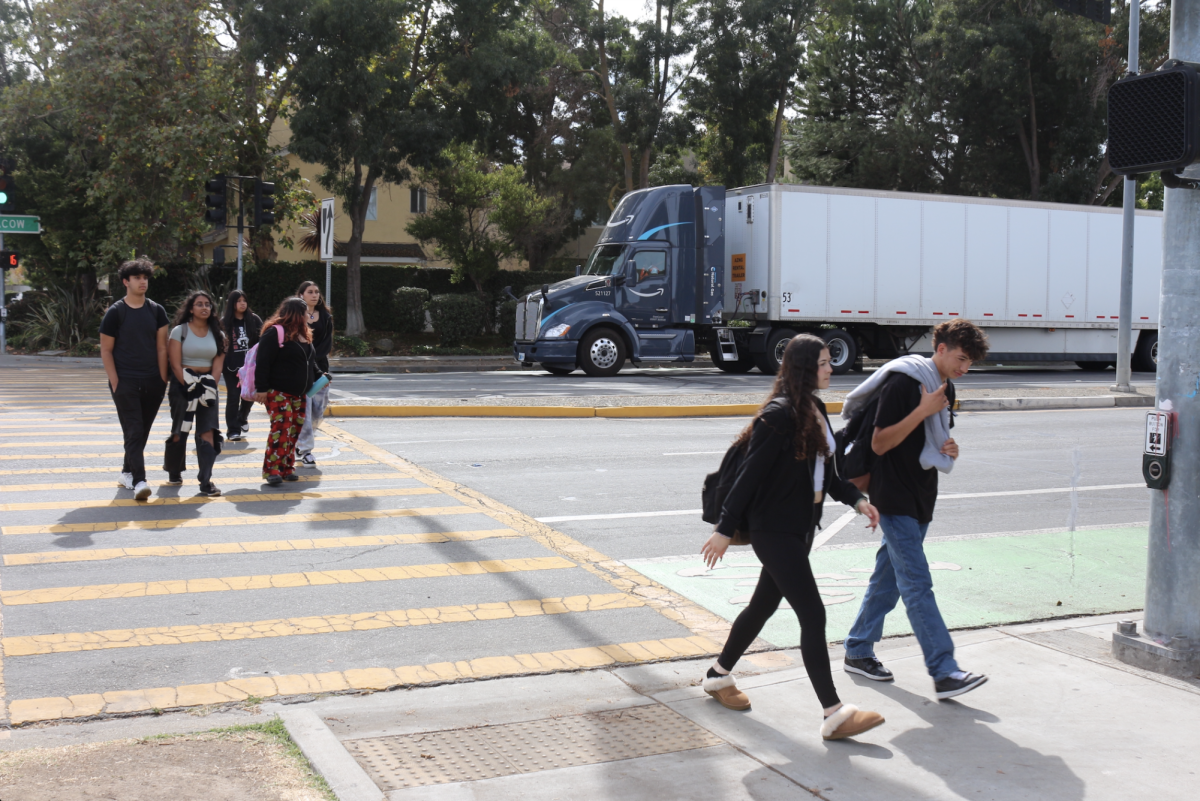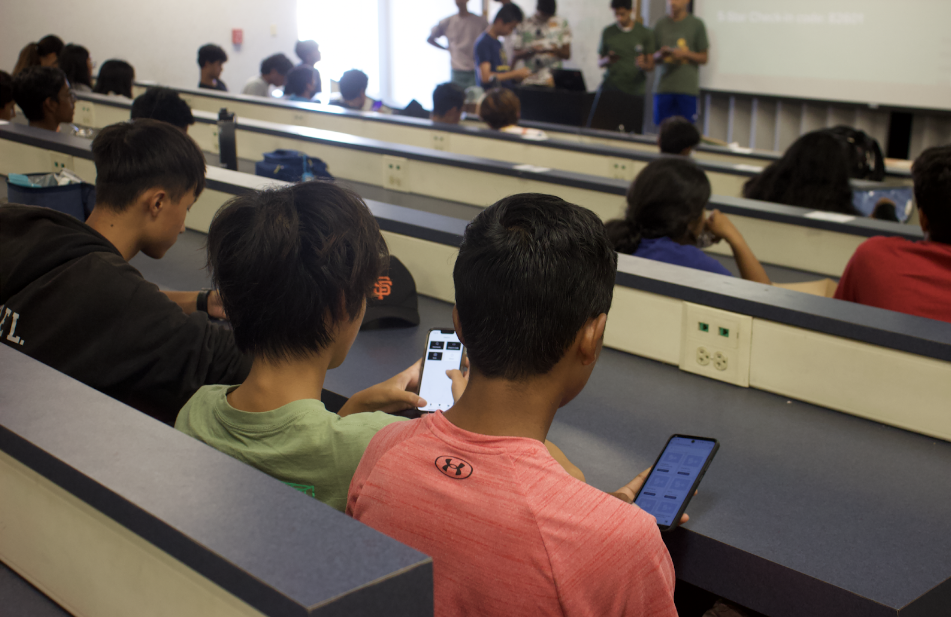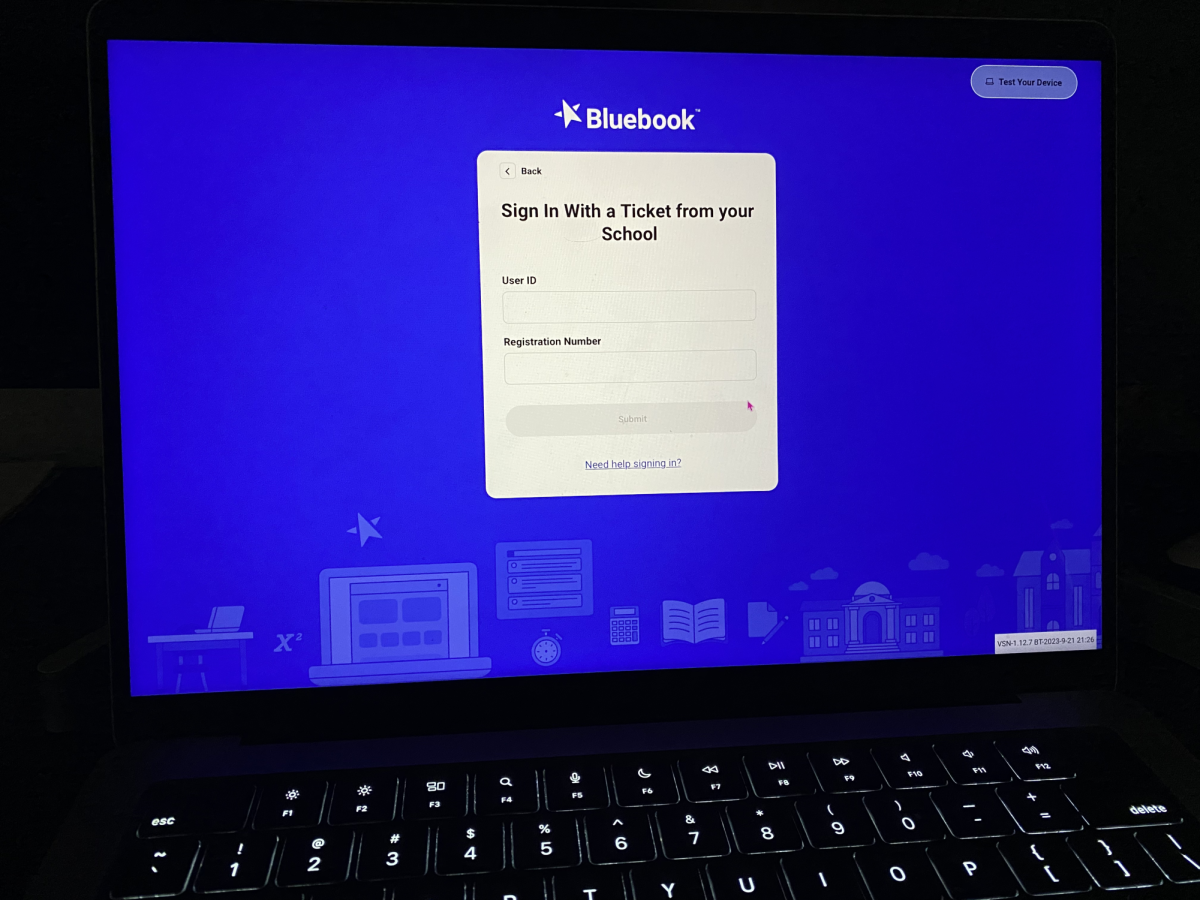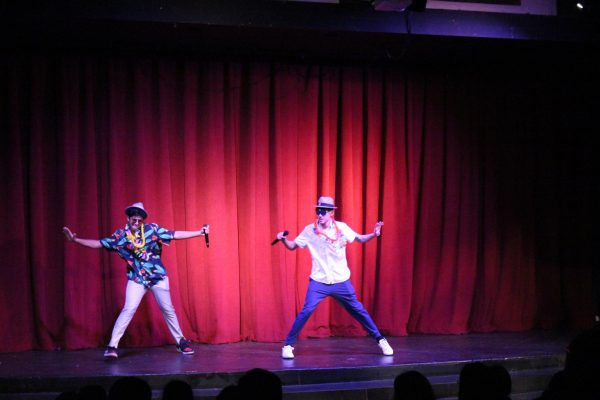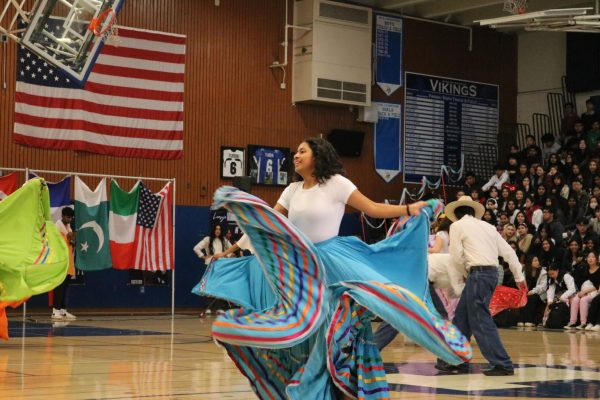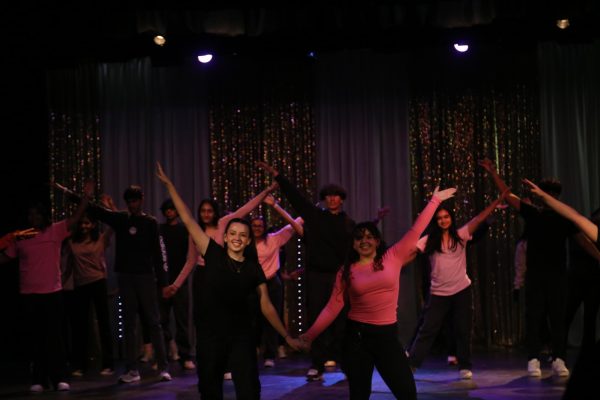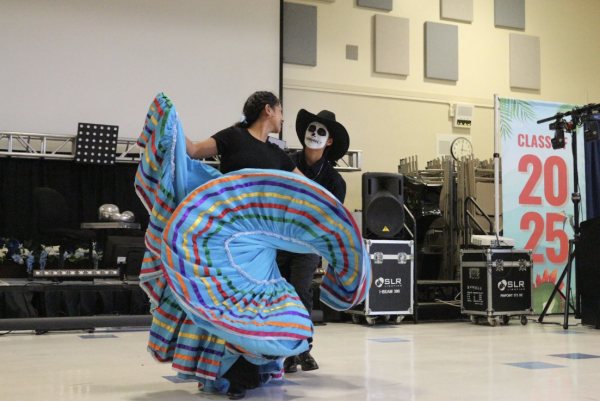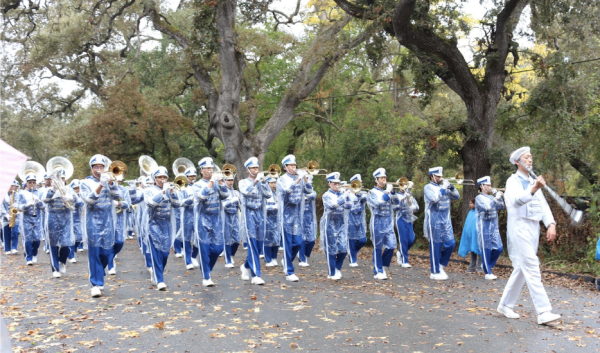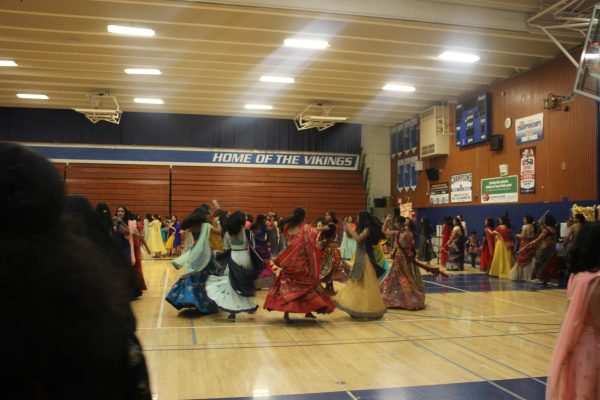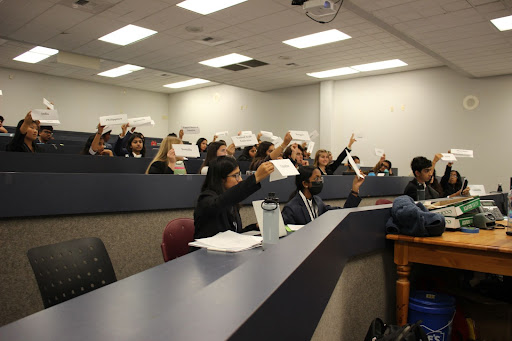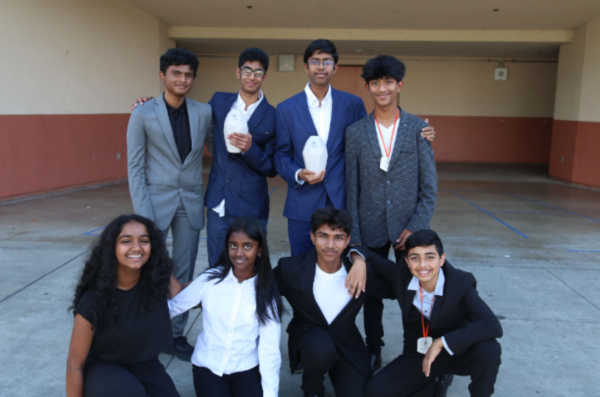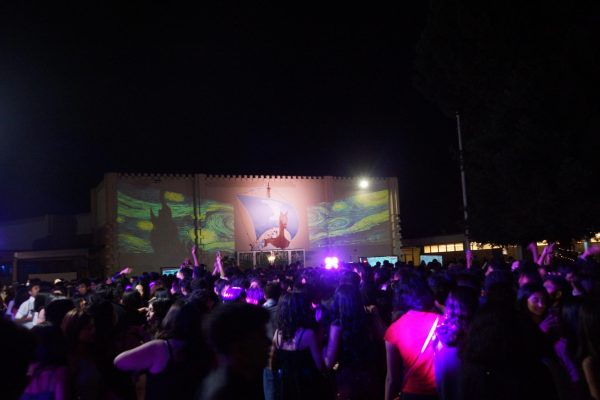A Look into the Life of a Computer (Sai)ntest
The next time you have trouble printing your assignment, drop by Room 101-A. You’re most likely to find Sai Kesari there. While you’re at it, you’ll probably notice the “Berbawy Makers” sign. His Arduino drawing device made that, too.
September 1, 2018
Most students spend passing periods agonizing over how to print out last-minute assignments. Senior Sai Kesari, on the other hand, spends his free time experimenting with improving such printers. Case in point: last year he and his friend, senior Vasant Chalemcherla, engineered a drawing device able to recreate programmed drawings on any sized paper. While Kesari dreams to transform this device by replacing the pen with a rotary tool to construct homes straight from blueprints, his work-in-progress device is just an example of his countless endeavors in the cosmos of technology and robotics.
On campus, Sai Kesari is president of Robotics Academy and former club Machine Learning, where he hopes to spread his passion for technology to other interested students. Through Robotics Academy, he and other members compete at Vex Robotics, a nationally-recognized competition for high school and university students, to build robots and beat their previous record of regional semifinalists. Meanwhile, at Machine Learning Club, he and other members focused on understanding and re-creating algorithms from open-source software TensorFlow.
“My favorite project was the smart playlist,” Kesari said about Machine Learning Club’s previous projects. “Based on your previous listening for the day, it suggested music for your listening in the day later on.”
Kesari’s interest in robotics stems from an uncanny love of destruction and reconstruction.
“I’ve always been curious about taking things apart and putting them together. By freshman year, I was taking apart remote-controlled cars or my drone to figure out how to put them back together. At one point, though, things got too complicated to put back together after taking them apart.”
He recalls approaching a friend for help when he got introduced to the collaborative tech workspace, or as the engineering community calls it, makerspace. Through the club, he also participated at Maker Faire, a vibrant, quasi-science fair allowing tech enthusiasts of all ages to share their projects and learn from others. Last Maker Faire, Kesari was approached by educational startup Kutir’s CEO, Gerry Ignatius, who took interest in his drawing robot. Now, Kesari not only spends his time teaching and working with Irvington students through campus clubs but also works on a new online platform for teaching robotics education online.
“At the beginning, it didn’t feel as engaging. I wanted to design things by myself, but teams were structured so that only people who knew stuff would design things and then ask you to build it, like an assembly line,” said Kesari when asked about his initial challenges in the tech field. “I spent the summer between my freshman and sophomore year teaching myself how to 3D model so I could be at the same level as those who asked me to build things.”
Two years later, he has added eight programming languages, including C++ and Java, and skills such as laser and vinyl cutting to the list. As current president, he hopes to change the club to prevent students from feeling his initial frustration.
“Last year, I introduced workshops where people currently in or outside of the club could create a whole design by themselves. It gave them the opportunity to work on things without being under the pressure of having to create something great.”
Inspired by a crowd-funded initiative to encourage people around the world to 3D print prosthetic limbs for Syrian children affected by the war, Kesari harbors a growing passion for prosthetic engineering.
“My dream is to make it easier for people who have lost limbs because it is a lot of mental and physical suffering.”


